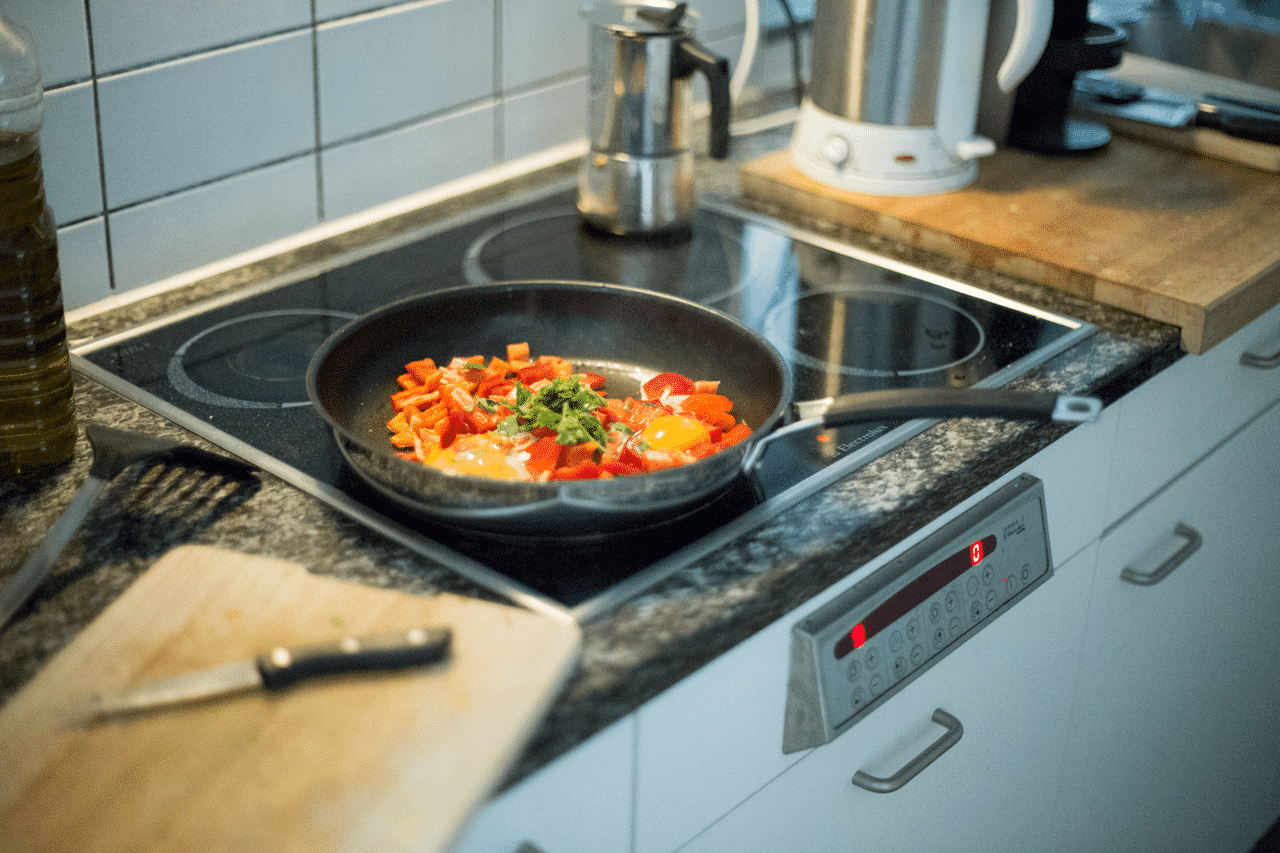There is no question on whether cast-iron skillets are useful or not as cookware – they are versatile, and they age gracefully too, especially if you know how to use and clean them properly.
There are a lot of folks who have been using the same set of high-quality cast-iron skillets for more than a decade, and they’re still functioning beautifully. However, the contradiction now is that cast-iron skillets were invented before the advent of modern glass top stoves.
Now what this means is that they are built for another era, and people are still using them now because obviously, they’re very reliable as cookware.
So we are pretty sure that people are eager to know how to protect glass top stove from cast-iron or using cast-iron on electric glass top stove. So if you are wondering if lodge cast-iron on glass top stove is alright, you will find out soon enough in our blog today. Also: lodge cast-iron glass cooktop – will it damage your stove? Let’s find out!
Using Cast-Iron on Electric Glass Top Stove
Despite what naysayers have been stating about lodge cast-iron on the glass cooktop, many people still use them on their glass top stoves. The result? Well, many of them have been doing it for decades, and they say that they’re completely fine with the results. Here’s what we’ve found out:
- Different manufacturers of cast-iron skillets produced skillets with different designs. Some of them had heat rings that were supposed to pair perfectly with the coil-type stoves of the yesteryears. However, there are are also manufacturers that didn’t bother adding a heat ring, so the bottom of the skillet is relatively, but not entirely, flat.
- What this means is that even though cast-iron skillets are not ideally suited for glass top stoves, many people still use them because they do always heat up after a time, and they can be used to cook a variety of dishes.
- Those who prefer using cast-iron skillets on their glass top stoves state that the important thing is not to drag the skillet across the glass, which might damage the glass and possibly also damage the heating mechanism of the stove.
- The significant difference between skillets and modern pots and pans designed for glass stove tops is the fact that they take a while to heat up. This is likely because the bottom of the skillets is not perfectly flat, and therefore not perfectly aligned with the glass heating top.
- To use skillets efficiently on glass top stoves, you have to give it time to pre-heat, much like an oven. Let’s say that you want to cook some eggs and pancakes. You can set your glass top stove to low or medium, and just let the skillet warm-up for a few minutes before you put anything in it.
- Just like any other cookware, the longer you keep it on the stove before cooking, the hotter it is going to become.
- Unlike other types of cookware designed for the ultra-flat orientation of glass top stoves, you are going to see some spots that do not take on signs of constant heating. These are called the blank spots that do not get sufficient heat distribution from this kind of stove.
- Whether you are using a light skillet or a heavy one that you can barely lift with both your hands, you can just let your glass top stove do its thing. Anyway, glass top stoves have their temperature regulation mechanisms that kill the heat when the pot or pan gets too hot, anyway.
- Does using skillets affect power costs? According to dedicated users, not really, couple this with credit and other stuff you can get from the power companies, and your electrical bill should be regular or average.
How to Protect Glass Top Stove from Cast-Iron
More folks are wary of using cast-iron skillets on glass top stoves. Here are some of the primary reasons why they are avoiding cast-iron skillets when the stove in question is a glass top stove:
- Cast-iron skillets are super heavy. Fill a heavy skillet with some water and ingredients, and you can do some severe damage on your glass top stove. While it is acknowledged that glass top stoves are meant to carry a lot of weight, too, the extra weight that comes with cast-iron skillets is not comparable with the weight of say, a counterpart pan or pot that is made of stainless steel or copper. The weight difference is enormous.
- Cast-iron skillets do not have perfectly flat bottoms. A flat base is essential for glass top stoves because it allows even heat distribution and reasonable cooking times. If your cookware doesn’t have a perfectly flat bottom, you are likely going to have to deal with uneven heat distribution and longer cooking times.
- Cast-iron skillets aren’t just heavy: they’re huge. They’re more extensive than most pans. The recommended cookware size is no more than one inch wide than the burners of the glass top stove.
There is also the issue of heat-trapping, which causes the bottom of the cast-iron skillet to heat up while still having impeded heat distribution, topside. This can shorten the life of the heating element of the glass top stove, which would have to work double-time just to cook your food. - The finish of cast-iron skillets may look smooth, but in reality, the finish can be a little abrasive.
So when you place the skillet on the glass stove, you are already scratching it minutely. The scratches may not be visible, but they’re there simply because the glass is coming into contact with something so much thicker, heavier, and rougher than it is.

